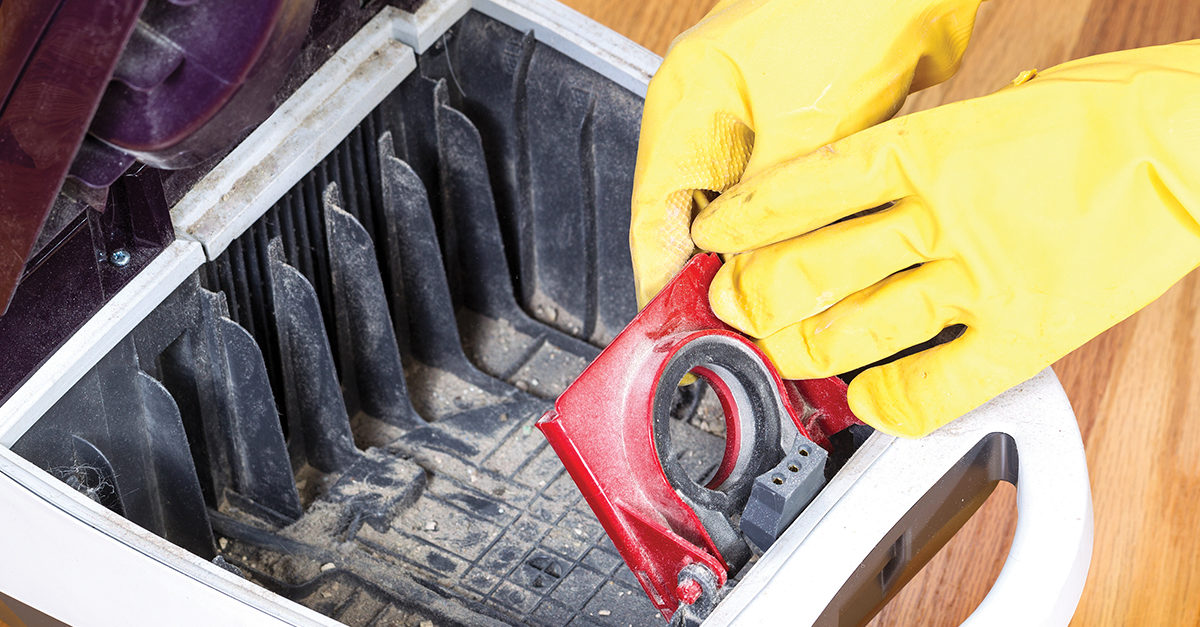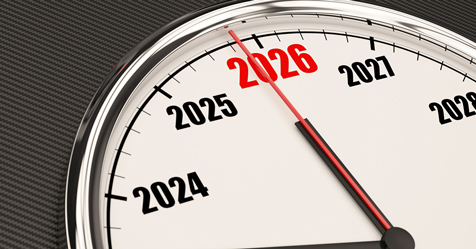Although tools and equipment represent 1.7-2.7 percent of sales, they play an integral part in a high-performance cleaning system.
Professional service providers spend considerable time selecting equipment that performs to the standards customers demand, while achieving the production rates needed to maintain a competitive edge. However, the discipline that is necessary to keep those carefully selected tools in peak operating condition is often overlooked. There is a saying among craftsmen: “Take care of your tools and your tools will take care of you.” It’s a simple phrase, but with sometimes deep and lasting impact.
Overlooking the Problem
Preoccupation with daily routines can at times prevent cleaning teams from seeing what is truly disrupting the system that is in place. Routine maintenance can often fall into this category. For example, if an area is dusty, the assumption may be that the specialist has not performed the task as required. However, what if the problem is actually a more complex issue with the system?
Let’s say another member of the team utilizes a power sweeper to service an attached parking area, and that team member fails to clean/change the filters at the proper intervals, causing the sweeper to create large amounts of airborne particulate, rather than containing the dust as designed. In this simple example, poor maintenance can have a wide-ranging impact on the cleaning system’s integrity.
Equipment Maintenance Costs
When considering the value of routine maintenance of equipment, the focus is often on the associated costs, including:
- Direct costs, which are routinely valued as materials and time.
- Material costs, which may include replacement parts, cleaning supplies, shipping costs, etc.
- Labor, which is calculated as the time directly spent servicing and/or cleaning the equipment.
These associated costs are too often seen as unnecessary expenses by those not considering the impact on the service delivery system as a whole. Frequently, time and materials fail to be allocated, maintenance schedules are not created, and preventive or routine maintenance is not enforced as a disciplined part of the delivery system. However, the value of performing proper maintenance in a timely, well-organized manner can yield benefits that commonly far exceed the associated costs.
Equipment Maintenance Benefits
Practitioners of good preventive maintenance often refer to the increase in equipment life span. This, of course, is a major benefit, but consider the broader reach of a good preventive maintenance program: A well-disciplined preventive maintenance program can increase productivity, enhance customer perception, and motivate staff morale. Don’t think that simple care for your tools can accomplish such tasks? Let’s look at the impact within a system.
The increase in productivity for the operator is readily apparent: If the equipment is working as designed, the operator can perform tasks as scheduled. But how does this impact the productivity of coworkers?
Look at the task of vacuuming in a high-performance cleaning system. The selected vacuum is chosen based on its capacity to capture and hold particulate while facilitating operator productivity. If the vacuum is not maintained properly, it will not effectively capture the particulate. A failure to capture particulate as designed can increase the frequency at which surfaces collect settled dust. This increased soiling rate can negatively impact customer perception and require repeat cleaning of another specialist.
The Cost of Poor Maintenance
High-performance cleaning systems depend on strict adherence to tested and proven standards, including the care, maintenance, and effective utilization of equipment. In our consultancy experience, we see far too many times a serious deficiency in equipment appearance and improper utilization. The customer pays us one time; repeating the work can be very expensive. Additionally, there is nothing that destroys morale faster than equipment that is poorly maintained to the point of being inoperative or ineffective.
In the fog of delivering daily service, the fundamentals that maintain a cleaning system’s integrity can be taken for granted. The performance of routine and preventive maintenance can fall into this category and simply be forgotten, but the impact can be felt deeply by both customer and provider. The next time you are looking to address a service deficiency, take a look at your tools; you may need to care for your neglected tools, so they can care for you.



